The crusades were a series of religious conflicts lasting from 1095 until 1291, conducted with the backing of the Catholic church, that aimed to recapture the Holy Land from Islamic control.
During these two centuries of conflict, several large-scale crusades were launched, which featured hundreds of bloody battles and sieges – as a result, the Crusader States, the kingdoms and realms formed by the victorious crusaders, required powerful castles to defend their territories, particularly from Muslim attempts to recapture them.
These fortifications were the crusader castles: state of the art defensive structures carefully designed to present as many obstacles as possible to a besieging force.
It was arguably these castles that helped the Crusader States to exist for as long as they did and allowed western lords to hold on to their new possessions in the Levant.
A Guide to Crusaders Castles
The Crusaders
Although the crusades were enormous military campaigns that included tens of thousands of armed men, the Crusader States themselves had great issues when it came to manpower.
When Pope Urban II toured France to preach the first crusade in 1095, a trip that ended in the Council of Clermont attended by the flower of French nobility, he was surprised by the popularity of the proposition.
Christians of all social classes were moved by the preaching, perhaps thanks to Urban’s assurance that any who died on the expedition would gain entry to heaven.
A mob made up primarily of peasants left for the Holy Land in 1095, followed by a far larger and better-organised expedition, known as the Prince’s Crusade, in 1096.
This army, numbering as many as 100,000 people if non-combatants are included, was led by many notable western European princes including Raymond of Toulouse, Hugh of Vermandois, Godfrey of Bouillon and Bohemond of Taranto.
Noble leadership also characterised later crusades too, for example, the Third Crusade was spearheaded by King Louis II of France and King Richard I ‘The Lionheart’ of England.
Historians have debated extensively the motivations of the crusaders, as the journey to the holy land was an extremely long one with only the promise of a hostile land and dangerous warfare at its end.
Some believe that the promise of land and riches motivated many of those who left Europe, particularly the nobles and lords.
The European feudal practise of primogeniture, which dictated that the firstborn son inherited his father’s estate in its entirety, has been suggested to explain why so many European nobles left for the Holy Land – younger sons of powerful lords stood to gain little by remaining in Europe, whereas the crusade offered them the opportunity to gain a fief of their own.
Indeed, many of the crusaders fitted this profile, such as the first king of the newly founded Kingdom of Jerusalem, Godfrey of Bouillon, who was the second son of Eustace II, Count of Boulogne.
However, the lack of opportunities for younger sons of nobles in Europe has perhaps been overstated – for example, before the crusade Godfrey served the Holy Roman Emperor Henry IV and secured the right to rule the Duchy of Lower Lorraine.
Therefore, genuine faith and religious conviction appear to be one of the primary reasons, if not the prime motivator, for the crusaders.
For so many to have abandoned their lives in Europe, with no solid hope of material gain in the east, there must have been a great belief in Urban II’s claim that all those who embarked upon crusade would be absolved of their sins.
Whatever the reason behind their going, by the time the crusader army reached Jerusalem in 1099 its numbers had dwindled to just 12,000 infantry and around 1,500 cavalry.
Following the capture of Jerusalem itself, these numbers reduced even further, as many of the victorious nobles and soldiers returned to Europe, considering their vows to crusade to be fulfilled.
This left just 300 knights and 2,000 infantry in the city, a tiny number with which the king of Jerusalem had to defend his newly captured territory.
It is this scarcity of manpower that helps to explain the development and proliferation of crusader castle in the Holy Land – these fortifications allowed the Crusader States to defend vast areas with relatively few men, a difficult task when surrounded by hostile neighbouring states.
Crusader’s Castle Design
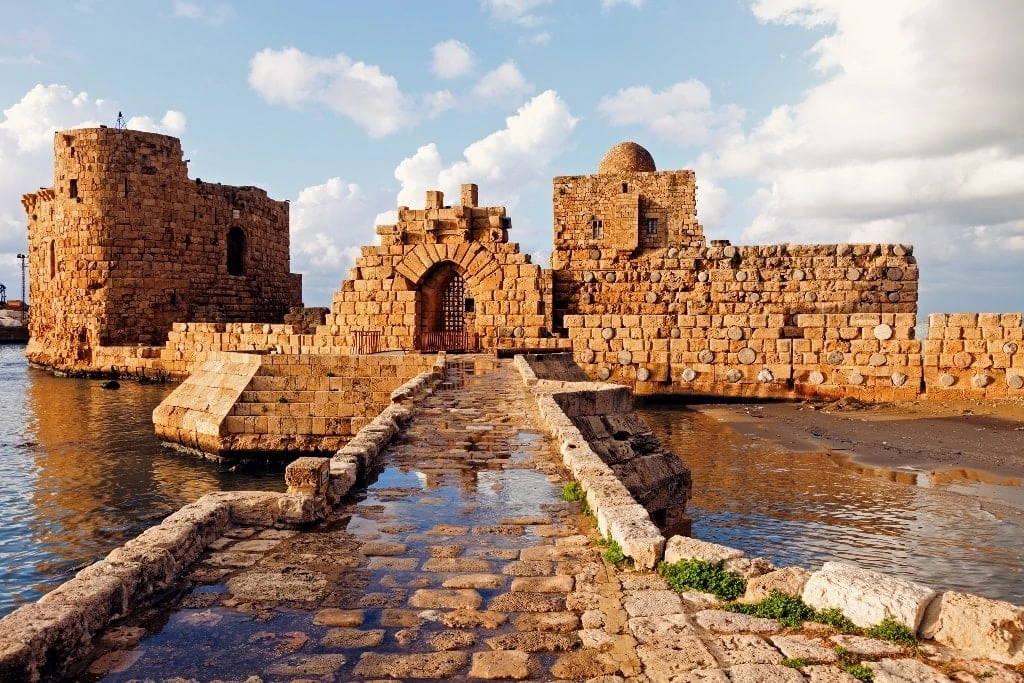
It was this urgent need for effective defensive structures that accelerated the building of castles in the Crusader States and led to the emergence of the Concentric Castle design.
Concentric castles were made up of two or more lines of concentric curtain walls – that is, all based around the same central point. The gap between the inner and outer walls was known as the outer bailey, while the area within the circuit of the inner curtain wall was called the inner bailey.
The curtain walls would also vary in height, with the inner wall being raised to allow defenders positioned on it to shoot over the outer wall, and onto advancing enemy troops.
The curtain walls of a concentric crusader castle also typically featured many towers, which could shelter defending troops and even hold siege engines such as trebuchets to allow the garrison to fire back at besiegers.
The arrow slits of the towers also made firing at attackers from a covered position possible. The parapets of the curtain walls would have also had crenellated battlements and machicolations, small protruding holes in the floor of the wall which allowed defenders to drop rocks, as well as hot water and boiling oil, onto enemy soldiers gathering at the base of the walls.
Crusader castles also incorporated ingenious architecture designed to slow down an attacking enemy and draw besiegers into designated ‘killing zones’.
Krak des Chevaliers has an excellent example of a ‘bent entrance’ – here a vaulted corridor leads from the outer gatehouse to the inner bailey, but halfway along its length the passage bends ninety degrees and narrows to only allow one person to pass through at once.
To reach the inner bailey, one would have to walk along this narrow corridor, which is lined with murder holes through which defenders could drop missiles and hot liquid.
If attackers did not follow the bend in the passage, they would instead be funnelled into the outer bailey, where they would be exposed to crossbow and bow fire from defenders on the walls above.
Crusader castles such as Krak des Chevaliers were fine examples of meticulously planned and highly effective defensive fortifications.
Thanks to their enormous size and cutting-edge engineering, these concentric crusader castles were fantastically expensive to build and were effectively beyond the means of all except great monarchs and wealthy military orders.
Since they were so very costly, the crusader castles were huge statements of power and political prestige. Therefore, they helped their owners to exert control over a territory by not only controlling it militarily, but by reminding its inhabitants who their feudal superiors were, and left the population in no doubt as to who held sway over them.
Strategic Benefits of Crusaders Castles
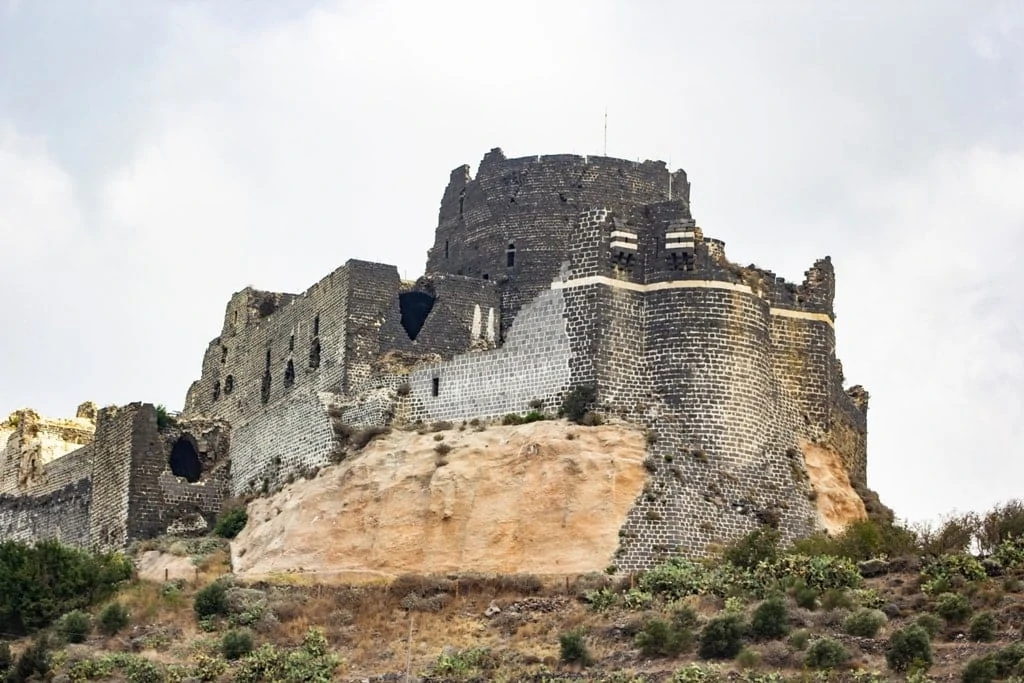
The position of crusader castles was often crucial to their success. Castle builders in the Crusader States took advantage of natural terrain features in order to make their fortifications more formidable – for example, Krak des Chevaliers was built on a steep ridge.
The geographical positioning of each castle was also carefully considered to make it as effective as possible at disrupting enemy movements. Built during the reign of King Fulk of Jerusalem (1131-43), Safed castle was placed in Galilee, where it fended off raiding parties from Damascus aiming to reach the city of Acre.
Although a castle like Safed could be avoided by marching around, it was dangerous for a raiding party to leave a castle to their rear, as the garrison could easily threaten their supply lines and even attack them directly.
Similarly, enemy armies marching into Crusader States territory would not leave a castle behind to cut off their supply lines: Instead they would besiege and attempt to capture castles that stood in the way of their advance.
In this way, it was possible for a very small number of men to garrison a castle and hold up enemy armies for months at a time, allowing more time for the leaders of the Crusader States to arrange relief forces and counter-attacks.
Crusader castles were the key to controlling newly captured territory too – Baldwin I of Jerusalem constructed Montreal castle in Transjordan to project his power into the region and bring it within his sphere of influence.
When faced with an enemy army, castles were also key to the defensive strategy of the Crusader States. Thanks to a lack of manpower, crusader armies would rarely engage invading forces head-on, instead opting to shadow enemy troops.
In this scenario, castles dotted across the landscape acted as safe refuges for Christian armies to shelter while they watched the movements of the enemy. This strategy worked very well in 1183 when a crusader army forced Saladin to withdraw by shadowing his movements.
Crusader castles were not only useful as a defensive measure – but they were also used extensively when crusader armies were on the offensive in the Holy Land.
f manpower was too limited to besiege or assault an enemy fortification directly, the construction of a castle could blockade the enemy position and starve it into submission.
Raymond of St. Gilles captured Tripoli using this strategy in 1109, and Ascalon fell in 1153 following the construction of a series of castles surrounding it in the preceding years.
When they were able to muster large numbers of fighting men (usually when crusading forces were in the Levant), the Crusader States used castles as places to resupply and leave wounded soldiers.
Castles also maintained safe and effective supply lines, allowing communication between crusader cities and armies on the march. The fortifications also functioned as places to rally and defend, should a crusader army be defeated in battle.
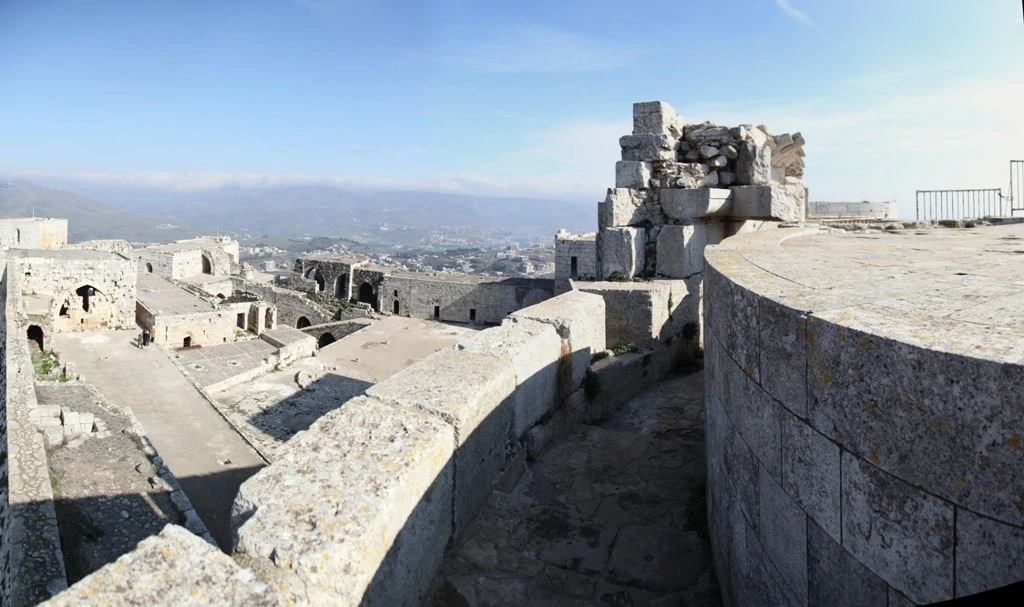
Castles were also used as bases from which to launch raids into enemy territory – these raiding parties would burn property and crops, and harass caravans, in an effort to put the enemy on a defensive footing.
Notably, the Knights Hospitaller used their castles of Krak des Chevaliers and Margat in Syria to launch raids into the local vicinity in order to maintain their authority and ensure payments of tribute continued.
Economic Function of Crusaders Castles
Thanks to castles, the rulers of the Crusader States were able to establish a relative peace which allowed economic life in their realms to function – farming and trade could be conducted in relative safety across the countryside, under the watchful eye of castle garrisons, despite the presence of aggressive neighbouring powers.
This peace, facilitated by the crusader castles, allowed Christian leaders in the Levant to encourage more Christians from the west to come and settle on the land.
This was a desirable step as the indigenous population were often hostile to the invading crusaders, not least because a large number of them were not Christian.
Settlers from Europe would have been encouraged by a nearby castle and would have felt safer – they could easily retreat to the castle for safety if an enemy raiding party or army appeared, bringing their valuables with them.
The string of castles built on strategic sites across the Crusader States also allowed their lords to command important roads, and charge tolls for passage. Trade caravans from Damascus and Egypt represented a key source of income for many castles.
Important Crusaders Castles
Krak des Chevaliers

Built by the Knights Hospitaller from the 1140s until its completion around 1170, Krak des Chevaliers bordered the Crusader State of the County of Tripoli.
An enormous and hugely impressive concentric fortification built on a natural ridge, the castle held a garrison of 2,000 men at its peak.
The inner bailey and wall circuit are built atop a steep stone slope or ‘glacis’, and the entire fortification is meticulously engineered to include various active defence measures, including a ‘bent entrance’, outer bailey, murder holes, and postern gate.
Perhaps the best-preserved example of a large crusader castle.
Kerak Castle
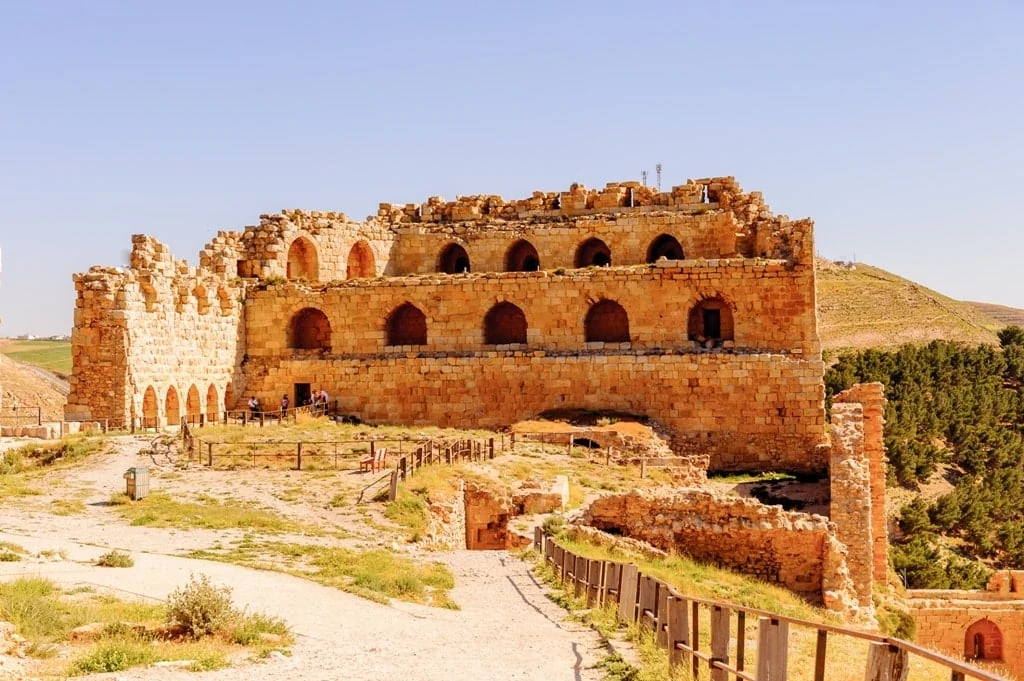
This large crusader castle is situated in modern day Jordan and is one of the largest in the Levant.
Constructed in the 1140s, the castle incorporated European, Byzantine and Arab architecture, and was constructed on a natural spur, the slopes of which protected it from the attack on three sides.
Notably, Raynald of Châtillon obtained Kerak in 1176 and used it to launch raids into Arab territory, as well as harrying caravans travelling to and from Mecca and Egypt. The castle was eventually captured by Saladin in 1189.
Montreal Castle
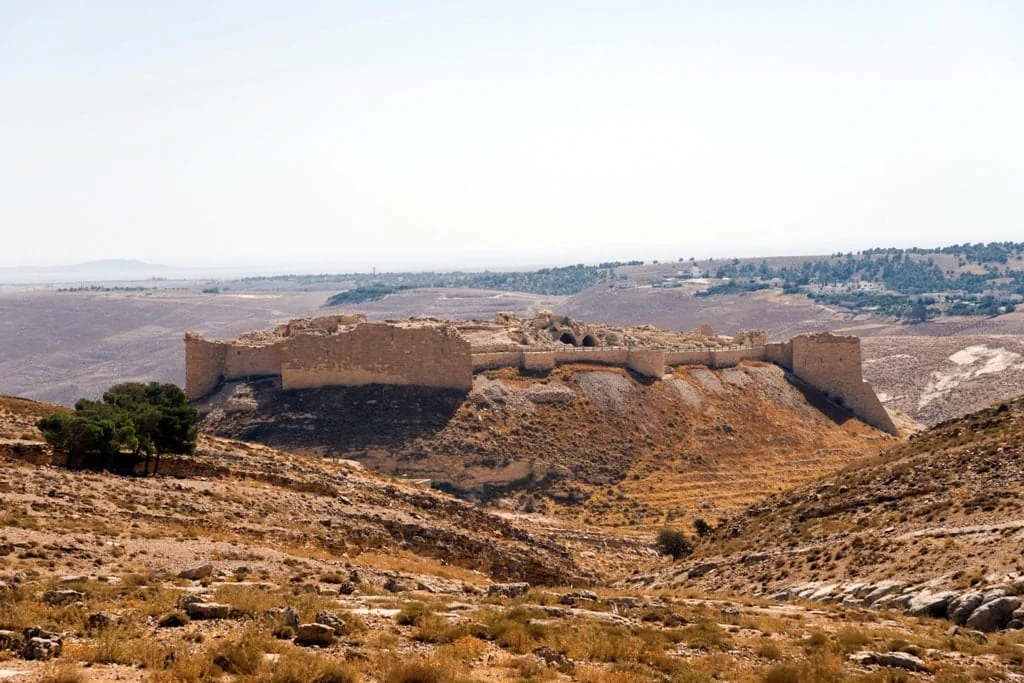
This crusader castle was built by King Baldwin I of Jerusalem in 1115 in order to extend his influence into Oultrejourdain (the territory roughly east of the river Jordan).
Montreal was built on top of a natural hill and was strategically placed to control the passage south to Egypt and north to Syria.
After its initial construction, the castle suffered from a lack of water, an issue that was solved by building a tunnel that led to two spring-fed cisterns at the base of the hill.
Montreal was captured by Saladin in 1189, although thanks to the steepness of the hill his army was not able to use siege engines against the castle.
Sidon Castle
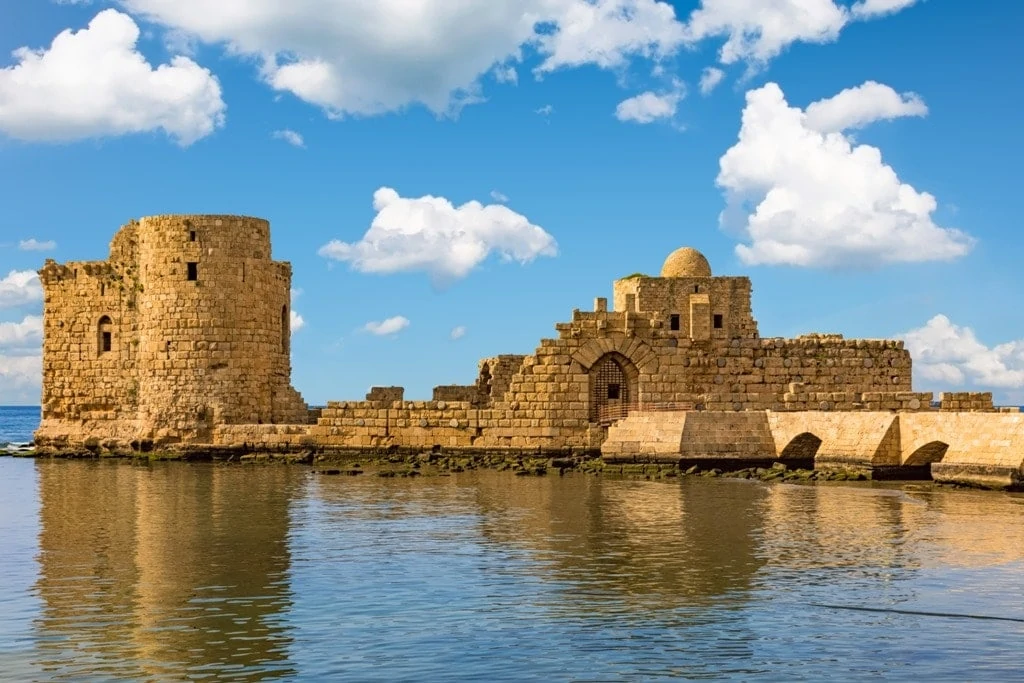
Built during the early 13th century and completed in 1228, Sidon is a sea castle located in the city of Sidon in modern Lebanon.
The castle actually stands on a small island, on the site of what was once an ancient Phoenician temple and is connected to the mainland by an 80-metre-long roadway.
The castle itself was small but strategically placed, as Sidon was a port town through which much trade from the Mediterranean passed.
Margat Castle
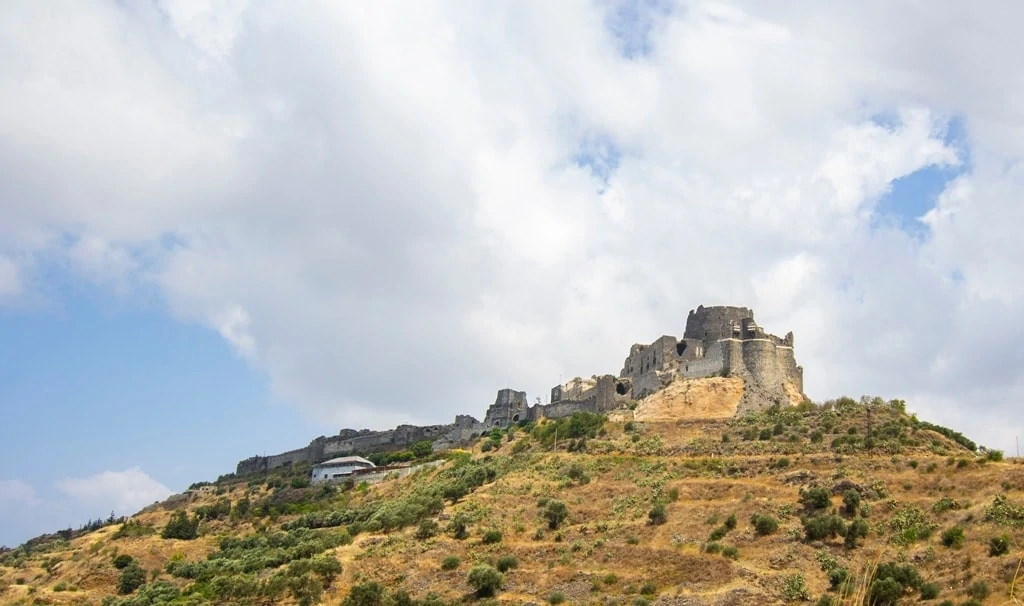
Margat stands in modern day Syria, on a hill formed by an extinct volcano just 2 kilometres from the Mediterranean Sea. The castle was held by Muslim forces until 1104, when it was captured by the Byzantines, before falling to Tancred, Prince of Galilee, and becoming part of the Principality of Antioch just a few years later.
Like Krak des Chevaliers, Margat is a concentric castle built on a spur of rock, featuring a large outer bailey and a ‘bent entrance’ to hinder attacking forces. The castle was owned by the Hospitallers in the 13th century, who made a good deal of money levying tolls on trade passing through the region.
Château Pèlerin
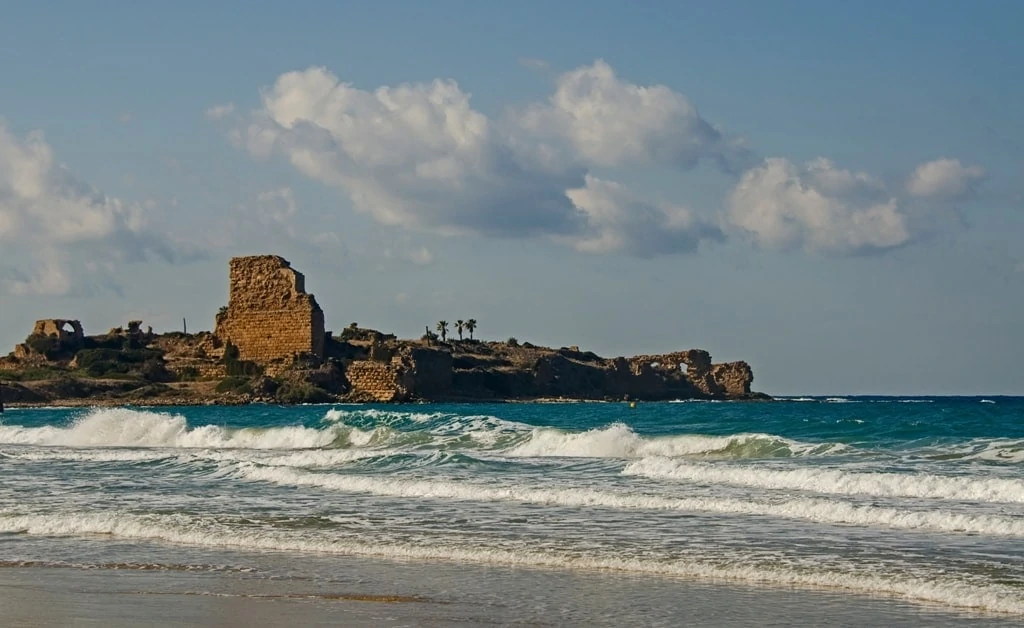
Constructed by the Knights Templar in 1218, this major crusader castle could hold up to 4,000 men in the event of a siege. Built on a promontory jutting out into the sea near Atlit on the coast of Israel, Château Pèlerin boasted an outer wall that was 6 metres thick and 15 metres tall, with three projecting square towers along its length.
It also featured an inner wall standing 30 metres tall, and with a thickness of 12 metres, making it incredibly resistant to even the most powerful siege engines.
The castle also possessed a harbour and three wells, meaning it would be very easy to resupply in the event of a siege. The position of Château Pèlerin allowed it to control to coastal routes along the Levant, as well as the surrounding countryside.
